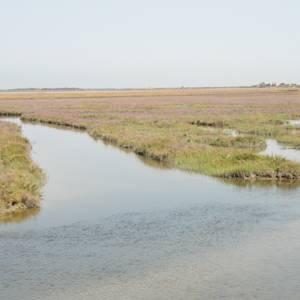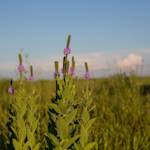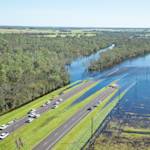Babcock Ranch, solar powered, climate resilient town
2022 CE • Florida
Babcock Ranch calls itself “America’s first solar-powered town.” Its nearby solar array — made up of 700,000 individual panels — generates more electricity than the 2,000-home neighborhood uses . . . The streets in this meticulously planned neighborhood were designed to flood so houses don’t. Native landscaping along roads helps control storm water. Power and internet lines are buried to avoid wind damage. This is all in addition to being built to Florida’s robust building codes . . . Climate resiliency was built into the fabric of the town with stronger storms in mind. So when Hurricane Ian came barreling toward southwest Florida [ . . . ] it was a true test for the community. The storm obliterated the nearby Fort Myers and Naples areas with record-breaking surge and winds over 100 mph. It knocked out power to more than 2.6 million customers in the state, including 90% of Charlotte County. But the lights stayed on in Babcock Ranch . . . Its residents say Babcock Ranch is proof that an eco-conscious and solar-powered town can withstand the wrath of a near-Category 5 storm."
Rachel Ramirez, "This 100% solar community endured Hurricane Ian with no loss of power and minimal damage," CNN, October 2, 2022.
Image: Public Domain via United States Department of Homeland Security


Learn about Maya Lin’s fifth and final memorial: a multi-platform science based artwork that presents an ecological history of our world - past, present, and future.

Discover ecological histories and stories of former abundance, loss, and recovery on the map of memory.

Learn how we can reduce our emissions and protect and restore species and habitats – around the world.

See how art can help us rethink the problems we face, and give us hope that each one of us can make a difference.

Help make a global memorial something personal and close to home. Share your stories of the natural world.


